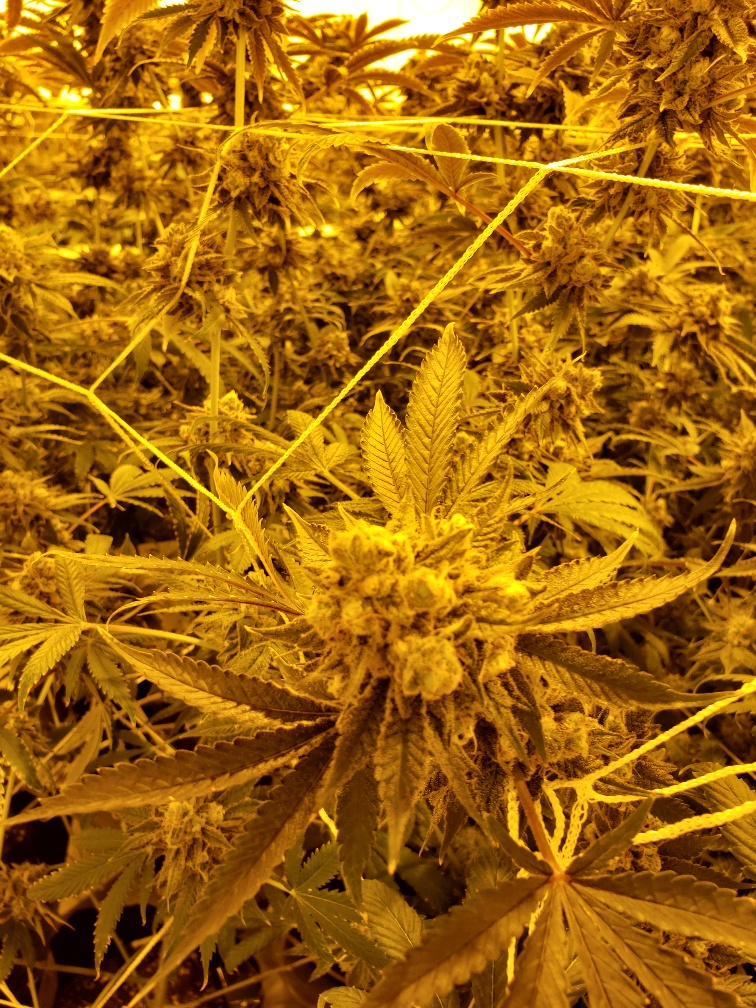
Background on Marijuana in California
The Golden State has a long history with marijuana. Attempts to legalize marijuana go all the way back to the 70s and the hippie generation. While they weren’t entirely successful at the time, they established the groundwork for future campaigns and more open-minded attitudes toward marijuana. After repeated attempts, both by prevailing on legislators and through ballot initiatives, marijuana was approved for medical purposes in 1996, well ahead of most of the rest of the nation. This led to an increase in the legal growing industry within the state, though it was still extremely regulated.
Over the next two decades, marijuana growing would become more and more lucrative, both legally and illegally. By 2010, most estimates show nearly 80% of the marijuana consumed in the US came from California, much of it from northern California. Continued efforts to decriminalize marijuana, reduce the sentence for possession, and eventually legalize marijuana were numerous in the 2000s and 2010s. Several ballot measures were put forth but often came up just short of legalization.
Finally, in 2016, voters approved Proposition 64. This states the Adult Use of Marijuana Act. 57%-43%, effectively legalizing the possession, personal growing, and commercial growing for sale within the state. This came with some restrictions, of course. So, there are still regulatory requirements that commercial businesses that grow and sell cannabis must meet. However, it is safe to say that the market grew significantly in the last 3 years as a result of Prop 64, especially in southern California.
It’s worth noting that marijuana is still illegal under federal statute. But no significant prosecution or enforcement actions have been undertaken within the state since the passage of Prop 64. It also cannot be exported or sold outside the state, as it remains a federally-controlled Schedule I drug.
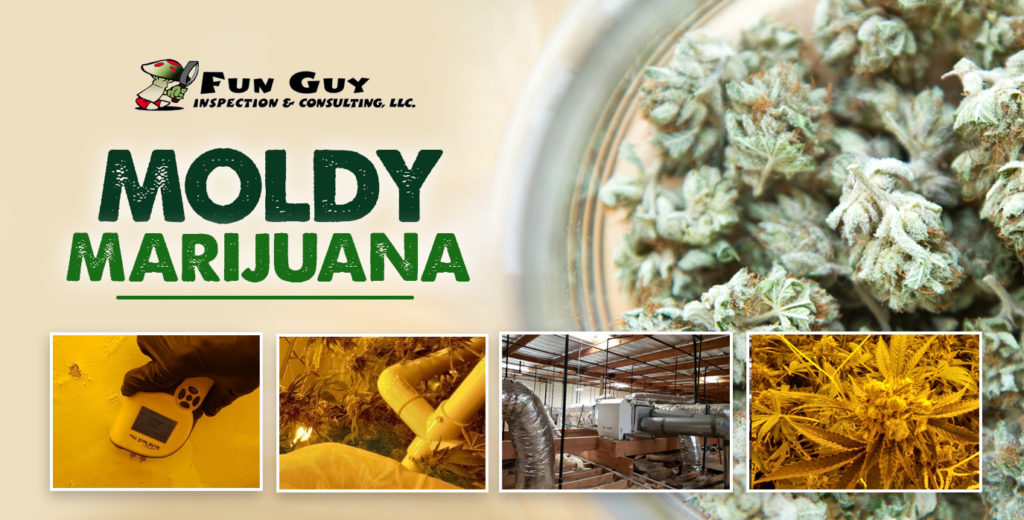
Marijuana Growing
Legal marijuana growing has increased since legalization, though many illegal operations still exist as well. Legal marijuana growing requires compliance with the regulations, permitting, and testing requirements set up by the Bureau of Cannabis Control (BCC), Cannabis Regulation Authority (CRA), and other departments within the state government, along with the paying of taxes on sales. Localities can still ban commercial growing and retail operations, and many have. However, as of September 2019, nearly 900 cannabis sellers have been licensed by the state to operate, including 187 dispensaries within the Los Angeles city limits.
To supply this growing market, both selling establishments and independent growers often use what is known as a marijuana grow houses. These are like indoor greenhouses, with artificial lighting, temperature and humidity controls, irrigation systems, and access for workers. This is typically seen as the best way to control the growth of cannabis plants and produce optimal yields, since variable outdoor weather, temperatures, and the typically dry conditions in southern California are not always conducive to plant growth.
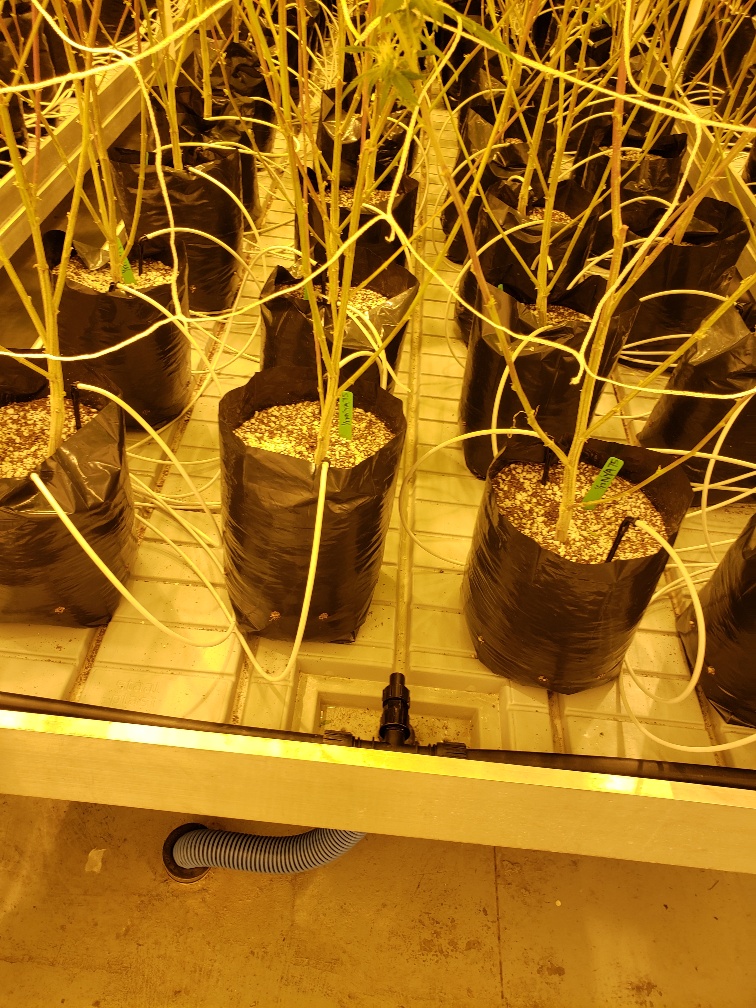
Typical Growing Process and Conditions
In the aftermath of legalization, many new growing businesses have been set up, often growing and selling on the same site or through affiliated businesses. While many operators consider the exact conditions, timing, and other aspects of their growing to be trade secrets, there is much advice available from industry publications and websites for entrepreneurs looking to get into the commercial marijuana growing and selling industry. That’s not exactly the purpose of this article, so we’ll just speak in general terms.
- For the most part, commercial grow houses are enclosed, warehouse-like buildings.
- Inside, they use grow lights (artificial lights that are calibrated to mimic sunlight) to trigger photosynthesis in the plants and enable their growth.
- Plants are typically grown in soil in most grow houses, as hydroponics/aeroponics tend to be less common and require more sophisticated knowledge and expertise.
- Alternating periods of light and darkness are essential and usually regulated by timers and other controls on the lighting.
- Temperatures are maintained in the upper 70s to low 80s Fahrenheit.
- Fertilizer mixtures are often used to ensure plant nutrients and growth.
- Regular watering via irrigation systems is common.
- Humidity is typically maintained between 40 and 60% for optimal growth.
- Plants may often be transplanted or harvested at various stages, depending on the intent of the grower (e.g., growing seedless plants, taking cuttings to clone plants and strains, etc.).
- These factors can vary based on strains of the plant being grown, the experience and expertise of the growers, and trial-and-error experimentation to achieve optimal results.
Mold and Mildew Problems Can Develop
Naturally, in an environment that is designed to be optimal for the growth of cannabis plants, other things will also find an ideal home to grow. Mold and mildew can both take hold in marijuana grow houses and spread to the plants. Mold is caused by mold spores of various types taking up residence in a friendly environment. The high humidity, warmer-than-room-temperature, light, and dark cycle environment of a marijuana grow house is conducive to the growth of many different kinds of mold. These typically are the result of spores that are brought in from the outside – either by employees, through ventilation, or by other vectors (soil, fertilizer, water, etc.). Mildew is similar to mold, caused by fungal spores – the difference is largely semantic, in that mildew is typically white, whereas molds are a range of colors.
Mildew and molds are common problems in agriculture of all types, and not just limited to cannabis growing. In general, mildews are white, and grow in a flat manner, whereas molds are a range of colors, and can grow out to some height from the surface on which they are growing. White powdery mildew is the most common type of affliction that will be found on marijuana plants, though other molds and mildews can also affect them. Regardless of whether mildew, mold, or both are affecting a plant crop, they are undesirable in a marijuana grow house, and steps need to be taken to eliminate them and prevent them from recurring.
The Consequences of Uncontrolled Mold and Mildew
Because mold and mildew are fungi, they feed on organic material. This means that, over time, they will break down the cannabis plants, in order to replicate and grow. The more mold or mildew that grows, the faster the plants are damaged, and the more mold and mildew that grows. It’s a vicious cycle. White powdery mold, the most common type affecting cannabis plants, looks like patches of white flour on the leaves and buds. If it is not treated, it will consume the plants and kill them, rendering the crop useless and valueless. Even in small amounts, it can infect the buds, decrease output or growth, and require tedious manual work to clean or salvage the plants. More advanced cases will likely require sacrificing all affected plants, which can be devastating financially, especially for newer growers.
Best Practices for Preventing Mold and Mildew Contamination
The good news is there are some best practices and steps you can take to prevent mold and mildew contamination from taking hold in your commercial marijuana grow house. There are also options to treat or clean plants that are affected (though they are a bit outside the scope of this guide). Prevention is always a better option than treatment and much more cost-effective. Below, we highlight some of the best practices to minimize your risk of developing molds and mildews on cannabis plants, which should be taken into consideration before you begin growing. If you have an existing commercial growing business and run into issues with mold or mildew, implementing these practices as soon as possible can save you a lot of hassle and cost in the long run.
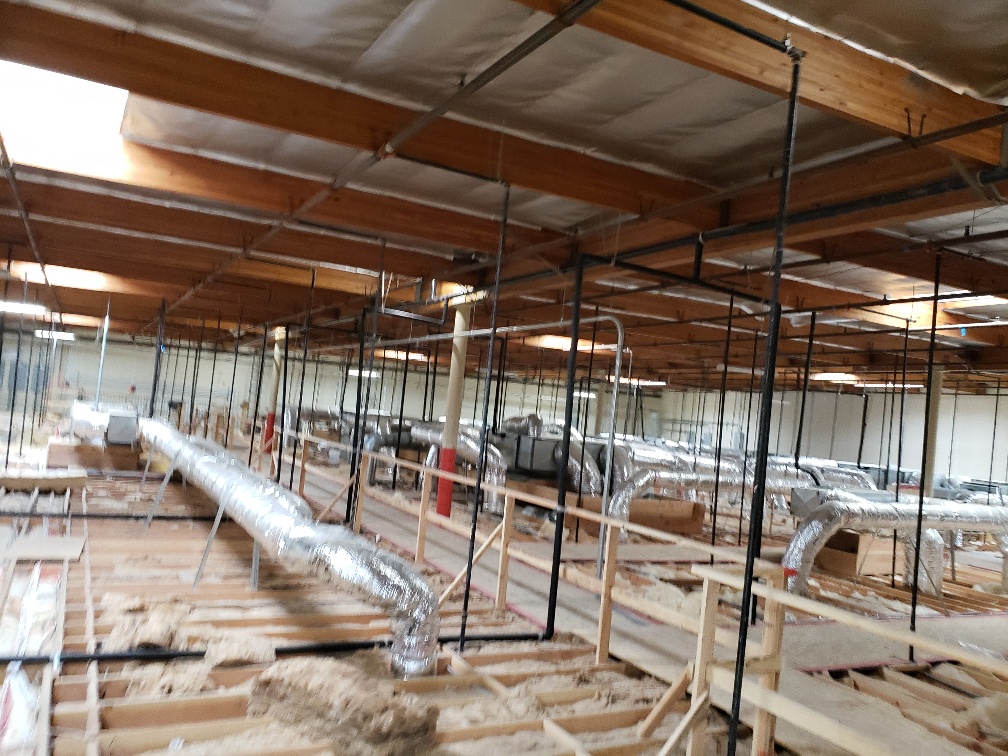
Environmental Separation
One of the most simplistic ways to help control any kind of mold or mildew growth is to practice good environmental separation in your grow house. Smaller, separated areas are easier to control, and allow for more precise monitoring and adjustment of temperature, humidity, airflow, and other critical factors for growth. Separating by strain, growth stage, or other factors – whatever makes the most sense for your operation – should be considered before setting up your grow house. Retro-fitting can be a bit more expensive, but there are cost-effective ways to achieve that, too (plastic sheeting, portable dehumidifiers, and so on).
The added benefit of environmental separation is that any mold or mildew that may take hold in one area won’t be spread to your entire crop, and can be contained, limiting losses or damage. Even if you’ve never had an issue with mold or mildew on your cannabis plants, it is possible that one can develop at any time. You can immediately prevent it from becoming a catastrophe by separating and regulating each grow area – better to have a mold or mildew problem on 1/8th of your crop than on all of it.
There’s one other form of separation to consider as well – and that is plant separation. While you naturally want to pack in as many plants as you can into your grow area, leaf-on-leaf contact will create areas of higher moisture, and provide an ideal home for mold and mildew. Ensure that plants have sufficient room to grow, without a lot of contact with other plants – practicing both macro-level environmental separation and micro-level separation between plants.
Clean and Controlled Areas
Another best practice for limiting mold and mildew growth and contamination in grow houses is to ensure you have clean and controlled areas throughout your operation. This not only applies to areas where plants are actively growing but every other area where plants are housed, handled, or processed.
Mold and mildew spores have to come from somewhere and can be brought in by outside air, on the clothes or body of a person, on bags of soil or fertilizer, and through many other means. Limiting access to growing operations is already required by various regulations for security purposes. Ensuring that all those individuals who have legitimate access take precautions to not drag in outside mold and mildew and that the areas they operate in are kept clean, is a simple way to reduce the chances of mold or mildew taking hold.
This doesn’t mean, of course, that employees need to adopt clean-room style attire. But regular sweeping, vacuuming, cleaning, washing/sanitizing of floors and surfaces, and good air handling and environmental control – even in areas like prep, repotting, or processing, that is separate from growing areas – can go a long way toward reducing the risk of a problem developing.
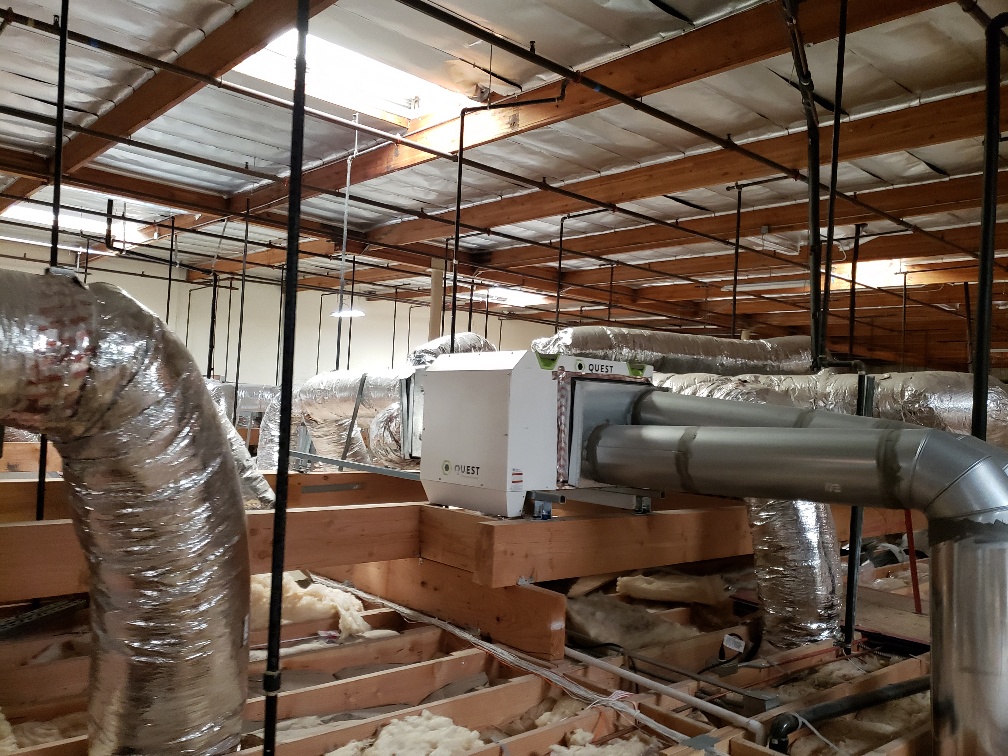
Air Handling
Air handling is one of two critical variables in preventing mold and mildew growth. To take hold, mold and mildew require the ideal humidity (more on that in the next section), as well as limited airflow. Higher airflow disrupts the spore’s ability to land and form colonies on plants, even when humidity is ideal for their growth. Individual air handlers for each area of your grow house operation are recommended, and a quality air handling system – with sufficient or more-than-sufficient airflow for space – is really the ideal situation.
While a great environmental and climate control system installed in the space can cost a lot of money and is preferred, simple, cost-effective options are available, too. Simple oscillating floor fans in each room can help improve airflow and disrupt spores before they have a chance to find a home on your plants.
Another aspect of air handling that is important is filtering. Outside air can often contain a lot of spores, and be the source for mold and mildew to start up in your grow house. All of your incoming air, and re-circulated air, should be thoroughly filtered as part of your environmental control system. HEPA or other small particle filters should be used and cleaned or changed regularly, depending on your system and manufacturer recommendations. This will help limit the amount of incoming spores, addressing the problem from one of the most common source vectors.
Finally, preventing a lot of airflow from outside to inside, without going through filtering systems, is another aspect of controlling mold and mildew growth. You should take steps to prevent direct airflow from outer doors into growing areas. Positive air pressure systems, doors that close, double airlock-style doors, blowers at critical doorway areas, and even cheap PVC strip curtains in doorways can all help mitigate the infiltration of unfiltered air.

Humidity Control
Humidity is the other key factor in the growth of mold and mildew. Most of the kinds of fungal spores that grow on cannabis plants require humidity of 60% or more – on the upper end of the normal growing range for cannabis plants.
There can be some overlap, however, with various spores able to grow in environments as low as 40% relative humidity. Because humidity in this range (40 to 60%) is required for most strains to grow, especially in earlier stages of development, it’s not practical to eliminate the humidity risk element in your grow house. However, that does not mean there are not steps you can take to prevent excess humidity.
A simple dehumidifier, or humidity control element of your HVAC system, can work wonders. Monitoring humidity and maintaining it at your ideal level for your particular strain and development stage is critical. Erring on the side of lower relative humidity – and never going over 60% – can help make the environment more hostile to mold and mildew growth, without having any deleterious effects on the growth of your cannabis plants.
Another trick to help control humidity is to run an air conditioner periodically. While warmer temperatures are ideal for your cannabis plants to grow, that doesn’t mean you can’t alternate heating with cooling, or treat air with air conditioning while using the space heaters and grow lights to create the ideal temperature. Air conditioning units are exceptional at removing humidity from the air, due to the way in which they operate.
Of course, these units all need to be maintained properly, and filters, reservoirs, and other parts cleaned and serviced as per the manufacturer’s recommendations, or they too become breeding grounds for mold and mildew and can spread it throughout your facility.

Monthly Monitoring and Inspections
Monthly monitoring and inspections from a company like FunGuy Inspections can make all the difference in the world to your commercial marijuana growing operation. Being able to monitor and adjust the humidity, airflow, and identify any mold or mildew growth on your plants, with just your own equipment, is a limited proposition. Even with high-end air handling units and equipment, there’s a lot to be gained from multi-level inspections using advanced instruments, to know the humidity, airflow, and other factors all around each room of your operation, and in non-growing areas as well.
Professional inspection services, like FunGuy Inspections, have specialized equipment to take these kinds of readings and can help to pinpoint any problem areas. They can provide you with detailed humidity and airflow readings throughout your operation, and assess any mold or mildew growth. In addition, they can help spot-check your air handling, dehumidification, and other equipment, to determine the potential sources of any mold or mildew outbreaks you may be experiencing.
Regular inspections and monitoring by professionals like FunGuy Inspections can help you to spot any irregular growth patterns, and address mold and mildew issues early. Once mold or mildew gets a good hold on your cannabis plant crop, it can end up spreading rapidly and doing a lot of damage. There’s no reason to sacrifice thousands of tens of thousands of dollars in plants due to mold or mildew growth when it can be prevented in the first place. Taking the steps outline in this guide, as well as having monthly inspections from FunGuy Inspections, can reduce or eliminate the vast majority of mold and mildew issues for marijuana grow houses.

If you’re based in the greater Los Angeles area and own or operate a marijuana growing operation, consider a consultation or inspection appointment with FunGuy Inspections. You’ll get great advice and feedback on your set up, a detailed inspection of your facility (with readings on moisture/humidity and other relevant metrics), receive an early warning on any issues that may be developing with mold and mildew, and achieve the kind of growth and productivity of your plants that you need in order to succeed in the world of legal marijuana grown in California.
